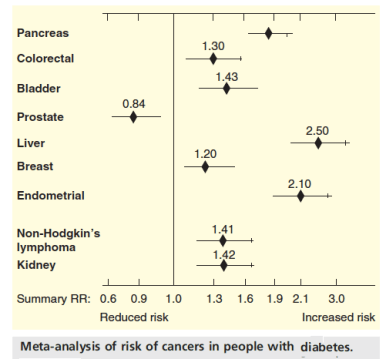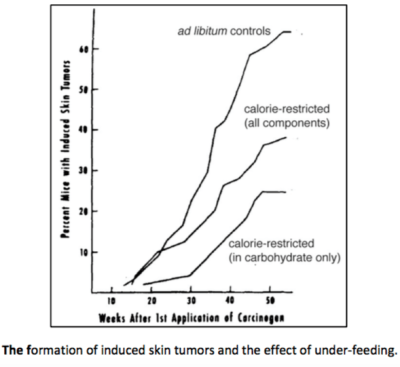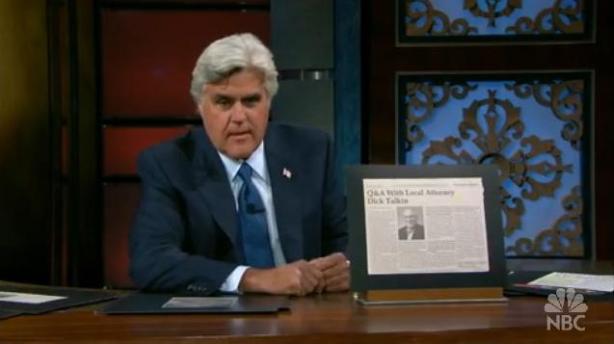The joke in academic circles is that there are three responses to a new idea. First, “This is wrong,” second, “There’s nothing new in this,” and third, the sub-title of this post. Priority in a scientific discovery is fundamental in science, however, and “we thought of this first” is not always that funny. Getting “scooped” can have serous practical consequences like jeopardizing your grant renewal and, if nothing else, most of us are motivated by a desire to solve the problem and don’t like the feeling that, by analogy, somebody came along and filled in our crossword puzzle. In dietary carbohydrate, all three of the responses co-exist. While an army of dietitians is still claiming that people with diabetes need ever more carbohydrate, in the background the low-fat paradigm crumbles and, somewhat along the lines of the predictions in A Future History of Diabetes , the old guard are coming forward to tell us that they have been recommending low-carb all along.
The latest discoverer of the need to reduce dietary carbohydrate is David Jenkins whose recent paper is entitled “Nuts as a Replacement for Carbohydrates in the Diabetic Diet.” [1] The title is crazy enough, following the tradition of getting away from nutrients, that is, well-defined variables, and replacing it with “food,” that is, mixtures of everything. It is, in fact, not really a low carbohydrate study but the experimental design is not the problem. It is the background and rationale for the study which recognizes the disintegration of the low-fat diet paradigm but, at the same time, fails to cite any of the low-carbohydrate studies that have been instrumental in showing the need to replace carbohydrates in the diabetic diet. Given forty years of studies showing the benefits of low carbohydrate diets and forty years of unrestrained attacks on the method, it will be interesting to see how Jenkins shows that it is actually the nutritional establishment that invented carbohydrate restriction.
Disputes over priority are well known in the history of science. Newton’s frequently quoted statement that he had seen farther than others because he had “stood on the shoulders of giants” has been interpreted by some historians as a sarcastic comment aimed at Robert Hooke with whom he had, among other things, a dispute over the priority for the inverse square law (force of gravity varies as the inverse of the square of the distance: F = GmM/g2). Hooke was short and suffered from kyphosis and is assumed not to have shoulders you would profitably stand on.
Even Einstein had trouble. His dispute with the mathematician David Hilbert about priority for the field equations of general relativity (also about gravity) is still going on, a dispute that I prefer to stay out of. Cited by his biographer, Abraham Pais, Einstein had apparently made up the verb to nostracize (nostrazieren) which he accused Hilbert of doing. (He meant that Hilbert had made Einstein’s idea community knowledge. Googling the word gives you only “ostracize” and “Cosa Nostra.”)
It is not the priority dispute, per se — the original low carbohydrate diet is usually attributed to William Banting who published the Letter on Corpulence in 1863, although Brillat-Savarin’s 1825 Physiologie du goût understood the principle. He said that some people were carbophores and admitted to being one himself. It is not just priority but that the people who are now embracing carbohydrate restriction were previously unrestrained in their attacks on the dietary approach and were adamant in denying the strategy to their patients.
David Jenkins: “Nuts.”
In trying to find an appropriate answer to the recent bit of balderdash by the redoubtable Hope Warshaw, Tom Naughton recounted the story of the Battle of the Bulge of WWII. Towards the end of the war, Hitler launched a massive winter attack around the city of Bastogne where, at one point, American Forces were surrounded. When the Germans demanded surrender, the American General, Anthony McAuliffe, sent the one-word reply: “Nuts!” I always thought it was a euphemism and that he actually went “Vice-presidential” as it was called in the last administration, but it turns to have been a common expression with him and he really did write “nuts” which, of course, had to be explained to the German couriers. (There is a “Nuts” Museum in Bastogne commemorating the battle which the Americans won somewhat as described in the movie Patton).
For installation in the Nutritional Nuts Museum and as an example of the current attempts to co-opt carbohydrate restriction, one can hardly beat Jenkins’s recent paper [1].
Richard:…Who knows not that the gentle duke is dead? ….
King Edward: Who knows not he is dead! Who knows he is?
Queen Elizabeth: All-seeing heaven, what a world is this!
— William Shakespeare, Richard III
The trick is to act as if the point you are making is already established. The Abstract of Jenkins study: “Fat intake, especially monounsaturated fatty acid (MUFA), has been liberalized in diabetic diets to preserve HDL cholesterol and improve glycemic control….” It has? Liberalized by whom? Although the American Diabetes Association guidelines are traditionally all over the place, few would consider that there is any sense of substantial liberalization on replacing carbohydrate with fat from them or any health agency.
“Replacement of carbohydrate by healthy fat … has been increasingly recognized as a possible therapeutic strategy in the treatment of diabetes [2] as concerns emerge over the impact of refined carbohydrate foods in increasing postprandial glycemia and reducing HDL cholesterol.” Reference [2] ((1) in the original) actually “emerged” in 2002 and is ambiguous at best: “Carbohydrate and monounsaturated fat together should provide 60–70% of energy intake.” (It is not my style of humor, but the behavioral therapists call this “shoulding on people.”) The paper admits that the evidence “is based on expert consensus” and contains what might be called the theme song of the American Diabetes Association:
“Sucrose and sucrose-containing food do not need to be restricted by people with diabetes based on a concern about aggravating hyperglycemia. However, if sucrose is included in the food/meal plan, it should be substituted for other carbohydrate sources or, if added, be adequately covered with insulin or other glucose-lowering medication.” (my italics)
In fact, one emerging piece of evidence is Jenkins 2008 study comparing a diet high in cereal with a low glycemic index diet [3]. The glycemic index is a measure of the actual effect of dietary glucose on blood glucose. Pioneered by Jenkins and coworkers, a low-GI diet is based on the same rationale as a low-carbohydrate diet, that glycemic and insulin fluctuations pose a metabolic risk but it emphasizes “the type of carbohydrate,” that is, it is a politically correct form of low-carbohydrate diet and as stated in the 2008 study: “We selected a high–cereal fiber diet treatment for its suggested health benefits for the comparison so that the potential value of carbohydrate foods could be emphasized equally for both high–cereal fiber and low–glycemic index interventions.” (my emphasis) The Conclusion of the 24-week study was: “In patients with type 2 diabetes, 6-month treatment with a low–glycemic index diet resulted in moderately lower HbA1c levels compared with a high–cereal fiber diet.” The figure below shows the results for HbA1c and weight loss and just looking at the figures, the results are certainly modest enough.

By coincidence, on almost the same day, Eric Westman’s group published a study that compared a low glycemic index diet with a true low carbohydrate diet [4]. The studies were comparable in duration and number of subjects and a direct comparison shows the potential of low carbohydrate diets (NOTE: in the figure, the units for the change are those of the individual parameters; an earlier version showed this as % which was an error):
 We thought of this first.
We thought of this first.
Oddly, neither of these papers are cited in the current study by Jenkins, et al. In fact, according to the paper, the precedents go way back:
“Recently, there has been renewed interest in reducing carbohydrate content in the diet of diabetic patients. In 1994, on the basis of emerging evidence, the American Diabetes Association first suggested the possibility of exchanging dietary carbohydrate for MUFA in dietary recommendations for type 2 diabetes). Although not all studies have shown beneficial effects of MUFAs in diabetes, general interest has persisted, especially in the context of the Mediterranean diet.”
The ADA discovered low carbohydrate diets ? Did my blogpost see it coming, or what? But wait…
“low carbohydrate intakes have also been achieved on the Atkins diet by increasing animal fats and proteins. This influential dietary pattern is reflectedin the relatively lower pre-study carbohydrate intakes of ~ 45% in the current study rather than the 50–60% once recommended.
The researchers in this area might not feel that 45 % carbohydrate has much to do with the Atkins diet but, in any case, it appears not to have been “influential” enough to actually get the studies supporting it cited.
Again: “Fat intake, especially monounsaturated fatty acid (MUFA), has been liberalized…” but “… the exact sources have not been clearly defined. Therefore, we assessed the effect of mixed nut consumption as a source of vegetable fat on serum lipids and HbA1c in type 2 diabetes.” Therefore? Nuts? That’s going to clearly define the type of MUFA? Nuts have all kinds of nutrients. How do we know that it is the MUFA in the nuts? In fact, the real question is whether any benefit would not be due to the reduction in carbohydrate regardless of what it were replaced with. So what was the benefit? The figure above shows the effect on hemoglobin A1C. As described by the authors:

“The full-nut dose reduced HbA1c by two-thirds of the reduction recognized as clinically meaningful by the U.S. Food and Drug Administration (.0.3% absolute HbA1c units) in the development of antihyperglycemic drugs…”
In other words, almost meaningful, and
“the number of participants who achieved an HbA1c concentration of <7% (19 pre-study participants, down to 13 post-study participants) was significantly greater on the nut treatment than on the muffin treatment (20 pre-study participants, remaining at 20 post-study participants…).”
This is some kind of accomplishment but the figure above shows that, in fact, the results were pretty poor. The statistics do show that the “full nut dose” was significantly different from the half-nut dose or the muffin. But is this what you want to know? After all, nobody has an average change in HbA1c. What most of us want to know is the betting odds. If I down all those nuts, what’s the chance that I’ll get better. How many of the people in the full-nut study did better than those in the half-nut study (did the authors not know that this would sound funny?). You can’t tell for sure because this information is buried in the statistics but the overlap of the error bars, highlighted in pink, suggests that not everybody gained anything — in fact, some may have gotten worse.
What kind of benefit is possible in a dietary intervention for people with diabetes? Well, the studies discussed above from Jenkins himself and from Westman show that, with a low-GI diet, it is possible to obtain an average reduction of about 4 %, more than ten times greater than with nuts and with a real low-carbohydrate diet much greater. I have added an inset to the Figure from Jenkins with data from a 2005 study by Yancy, et al. [5]. The red line shows the progress of the mean in Yancy’s studied. If you had diabetes, would you opt for this approach or go for the full-nut dose?
Bibliography
1. Jenkins DJ, Kendall CW, Banach MS, Srichaikul K, Vidgen E, Mitchell S, Parker T, Nishi S, Bashyam B, de Souza R et al: Nuts as a replacement for carbohydrates in the diabetic diet. Diabetes Care 2011, 34(8):1706-1711.
2. Franz MJ, Bantle JP, Beebe CA, Brunzell JD, Chiasson JL, Garg A, Holzmeister LA, Hoogwerf B, Mayer-Davis E, Mooradian AD et al: Evidence-based nutrition principles and recommendations for the treatment and prevention of diabetes and related complications. Diabetes Care 2002, 25(1):148-198.
3. Jenkins DJ, Kendall CW, McKeown-Eyssen G, Josse RG, Silverberg J, Booth GL, Vidgen E, Josse AR, Nguyen TH, Corrigan S et al: Effect of a low-glycemic index or a high-cereal fiber diet on type 2 diabetes: a randomized trial. JAMA 2008, 300(23):2742-2753.
4. Westman EC, Yancy WS, Mavropoulos JC, Marquart M, McDuffie JR: The Effect of a Low-Carbohydrate, Ketogenic Diet Versus a Low-Glycemic Index Diet on Glycemic Control in Type 2 Diabetes Mellitus. Nutr Metab (Lond) 2008, 5(36).
5. Yancy WS, Jr., Foy M, Chalecki AM, Vernon MC, Westman EC: A low-carbohydrate, ketogenic diet to treat type 2 diabetes. Nutr Metab (Lond) 2005, 2:34.









